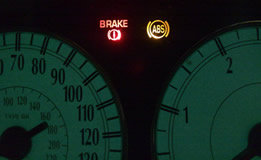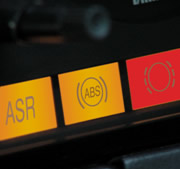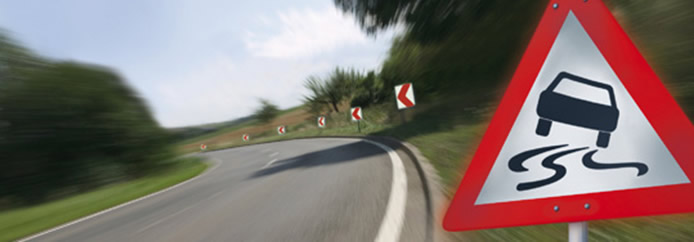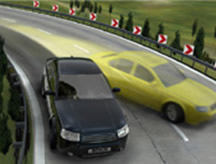

 ABS Braking is not new a concept, the problem of wheels locking up (skidding) with the effects of increased stopping distance and loss of steering control has been understood for many years.
Prior to the availability anti-lock braking systems, 'Cadence' braking was widely taught as a means of avoiding wheel lock. The principle of this was to brake until the wheels just locked and then release to regain grip, before applying the brakes again.
ABS Braking is not new a concept, the problem of wheels locking up (skidding) with the effects of increased stopping distance and loss of steering control has been understood for many years.
Prior to the availability anti-lock braking systems, 'Cadence' braking was widely taught as a means of avoiding wheel lock. The principle of this was to brake until the wheels just locked and then release to regain grip, before applying the brakes again.
Bosch was the first to develop ABS braking, the system relies on signals indicating road speed from each wheel and is transmitted to the ABS control unit, it can therefore detect lock up of a brake based upon the comparisons made against the other rotating wheels not locked on the car, the control unit will then release that particular wheel until it is unlocked, this process is repeated till eventually the braking is under control with maximum braking taking place without skidding.
An illuminated warning light means your vehicle has detected a potential ABS fault. The control unit has logged one or even more diagnostic trouble codes that correspond to the problem and has turned on the warning lamp to alert you of the problem.
Did you know? That the A.B.S. warning light is part of the MOT test and therefore must function in the correct manner outlined in the test proceedures.
 Traction control sometimes called ASR (anti-slip regulation) uses the ABS system combined with engine electronics in an effort to control wheel spin and therefore to regain grip will initially, unknown to the driver reduce power and will further reduce if spinning stills occurs, in severe spin it will apply ABS braking to the spinning wheel or wheels and therefore regain control and re-establish traction to the driven wheels.
Traction control sometimes called ASR (anti-slip regulation) uses the ABS system combined with engine electronics in an effort to control wheel spin and therefore to regain grip will initially, unknown to the driver reduce power and will further reduce if spinning stills occurs, in severe spin it will apply ABS braking to the spinning wheel or wheels and therefore regain control and re-establish traction to the driven wheels.
If there is a problem with the ASR system the warning light will illuminate usually along with the ABS light.
 Skidding is one of the main reasons for traffic accidents, particularly those with fatal consequences. ESP actively supports you in difficult driving manoeuvres with a risk of skidding and keeps your vehicle safely on course.
Skidding is one of the main reasons for traffic accidents, particularly those with fatal consequences. ESP actively supports you in difficult driving manoeuvres with a risk of skidding and keeps your vehicle safely on course.

A sudden obstacle, such as a traffic jam just after a bend, the ESP system will react instantly and prevent skidding when performing a fast avoidance manoeuvre.
 A bend that has been wrongly estimated, your car threatens to break away, ESP reacts instantly by using information received from the steering wheel angle sensor and the axis or yaw rate sensor located in the centre of the vehicle and will intervene by specific braking to individual wheels to counteract your vehicle skidding or spinning out keeping you safely on course.
A bend that has been wrongly estimated, your car threatens to break away, ESP reacts instantly by using information received from the steering wheel angle sensor and the axis or yaw rate sensor located in the centre of the vehicle and will intervene by specific braking to individual wheels to counteract your vehicle skidding or spinning out keeping you safely on course.
The best protection possible from any accident is to prevent it from happening in the first instance.
Active driving safety systems such as the Electronic Stability Program, Antilock Braking System, or the Traction Control System fitted in today's modern vehicles are designed with just that in mind keeping the driver as safe as possible, therefore reducing a potentially dangerous situation to an absolute minimum.
All these systems have self diagnostics built in and therefore can be tested using the correct equipment.
If you're experiencing problems please contact our reception.